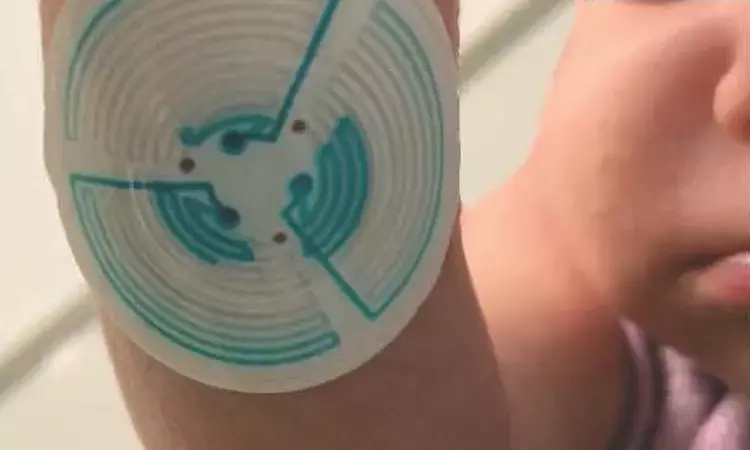- Home
- Medical news & Guidelines
- Anesthesiology
- Cardiology and CTVS
- Critical Care
- Dentistry
- Dermatology
- Diabetes and Endocrinology
- ENT
- Gastroenterology
- Medicine
- Nephrology
- Neurology
- Obstretics-Gynaecology
- Oncology
- Ophthalmology
- Orthopaedics
- Pediatrics-Neonatology
- Psychiatry
- Pulmonology
- Radiology
- Surgery
- Urology
- Laboratory Medicine
- Diet
- Nursing
- Paramedical
- Physiotherapy
- Health news
- Fact Check
- Bone Health Fact Check
- Brain Health Fact Check
- Cancer Related Fact Check
- Child Care Fact Check
- Dental and oral health fact check
- Diabetes and metabolic health fact check
- Diet and Nutrition Fact Check
- Eye and ENT Care Fact Check
- Fitness fact check
- Gut health fact check
- Heart health fact check
- Kidney health fact check
- Medical education fact check
- Men's health fact check
- Respiratory fact check
- Skin and hair care fact check
- Vaccine and Immunization fact check
- Women's health fact check
- AYUSH
- State News
- Andaman and Nicobar Islands
- Andhra Pradesh
- Arunachal Pradesh
- Assam
- Bihar
- Chandigarh
- Chattisgarh
- Dadra and Nagar Haveli
- Daman and Diu
- Delhi
- Goa
- Gujarat
- Haryana
- Himachal Pradesh
- Jammu & Kashmir
- Jharkhand
- Karnataka
- Kerala
- Ladakh
- Lakshadweep
- Madhya Pradesh
- Maharashtra
- Manipur
- Meghalaya
- Mizoram
- Nagaland
- Odisha
- Puducherry
- Punjab
- Rajasthan
- Sikkim
- Tamil Nadu
- Telangana
- Tripura
- Uttar Pradesh
- Uttrakhand
- West Bengal
- Medical Education
- Industry
New Soft "sweat stickers" may streamline diagnosis of cystic fibrosis in children

CAPTION
A sweat sticker on an infant after the conclusion of a sweat test. This material relates to a paper that appeared in the Mar. 31, 2021, issue of Science Translational Medicine, published by AAAS. The paper, by T.R. Ray at University of Hawaii at Manoa in Honolulu, HI; and colleagues was titled, "Soft, skin-interfaced sweat stickers for cystic fibrosis diagnosis and management."
Cystic fibrosis is diagnosed in infants by use of sweat testing as elevated chloride concentrations in sweat are indicative of cystic fibrosis. The current approach can have poor sensitivity and require repeated testing. For further reference log on to: http://dx.doi.org/10.1126/scitranslmed.abd8109
The concentration of chloride in sweat remains the most robust biomarker for confirmatory diagnosis of cystic fibrosis (CF), a common life-shortening genetic disorder. Early diagnosis via quantitative assessment of sweat chloride allows prompt initiation of care and is critically important to extend life expectancy and improve quality of life.
Cystic fibrosis is diagnosed in infants by use of sweat testing as elevated chloride concentrations in sweat are indicative of cystic fibrosis. The current approach can have poor sensitivity and require repeated testing.
New "sweat stickers" may streamline the early diagnosis of cystic fibrosis by enabling scientists to easily gather and analyze sweat from the skin of infants and children.
The stickers matched the performance of previous, more cumbersome devices when tested with 51 subjects, suggesting the stickers could address design obstacles that have held back the diagnosis and treatment of cystic fibrosis in pediatric patients.
Diagnosing cystic fibrosis in infancy or childhood is critical to achieve good outcomes, as current treatments must be given early to extend lifespans and alter the course of the disease. Many current diagnostics work by detecting levels of chloride in sweat, which are elevated in cystic fibrosis patients.
However, these tests must often be repeated and use unwieldy wrist-wrapped devices, making them impractical for infants with soft skin and low levels of sweat. To address this need, Tyler Ray and colleagues developed their sweat stickers, which are soft microfluidic devices with a multilayered design that can conform to the skin of both infants and adults. The stickers rapidly collect and store sweat from the skin, which scientists can then analyze using a smartphone application. The stickers collected sweat as effectively as a traditional method named MSCS in a pilot study with 18 healthy subjects and 33 patients ranging from 2 months to 51 years old.
Unlike MSCS, the stickers gathered enough sweat to avoid any repeated tests and did not cause uncomfortable skin indentations in infants. The researchers call for larger studies to further establish their platform's accuracy and precision.
For further reference log on to:
http://dx.doi.org/10.1126/scitranslmed.abd8109
Hina Zahid Joined Medical Dialogue in 2017 with a passion to work as a Reporter. She coordinates with various national and international journals and association and covers all the stories related to Medical guidelines, Medical Journals, rare medical surgeries as well as all the updates in the medical field. Email: editorial@medicaldialogues.in. Contact no. 011-43720751
Dr Kamal Kant Kohli-MBBS, DTCD- a chest specialist with more than 30 years of practice and a flair for writing clinical articles, Dr Kamal Kant Kohli joined Medical Dialogues as a Chief Editor of Medical News. Besides writing articles, as an editor, he proofreads and verifies all the medical content published on Medical Dialogues including those coming from journals, studies,medical conferences,guidelines etc. Email: drkohli@medicaldialogues.in. Contact no. 011-43720751


